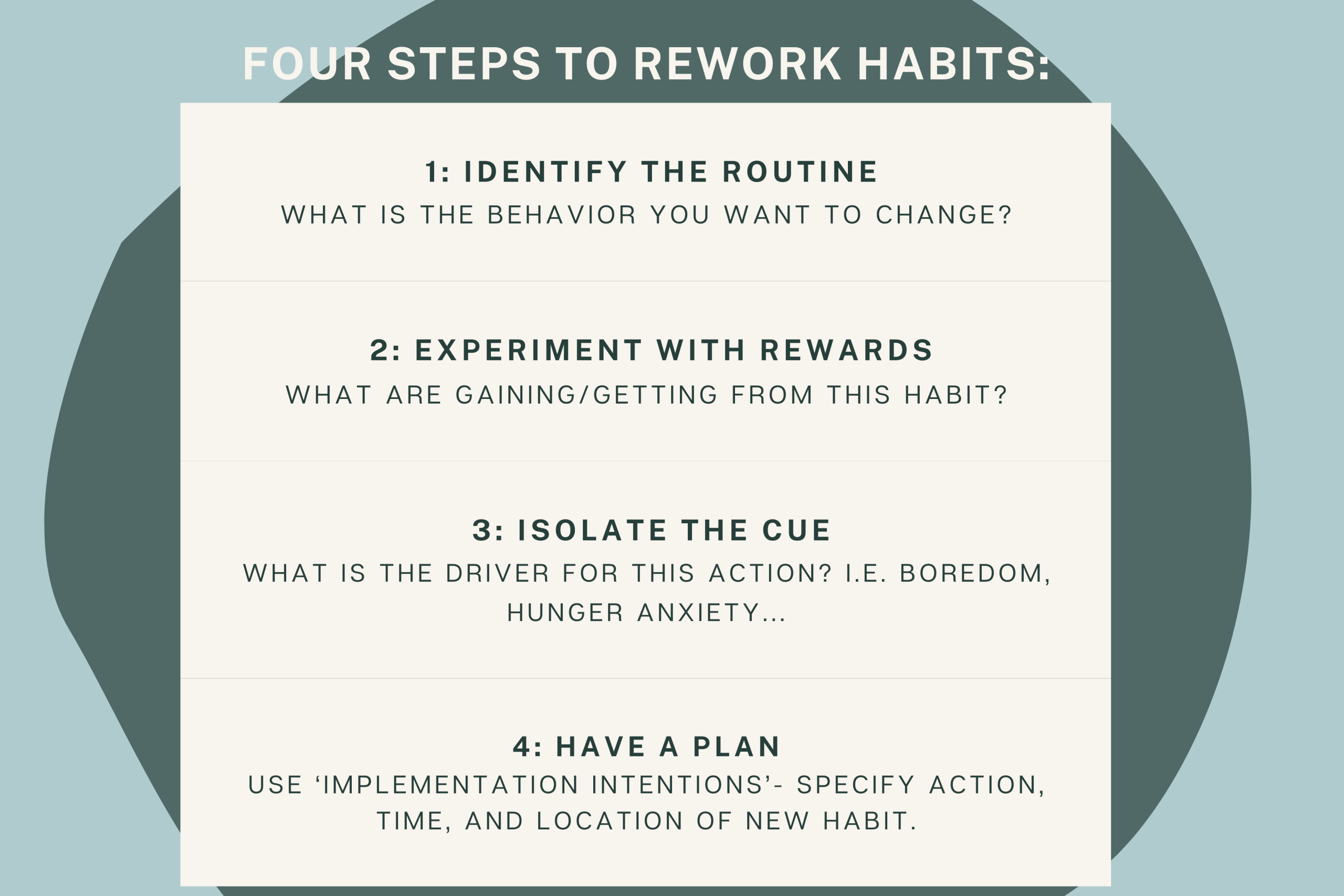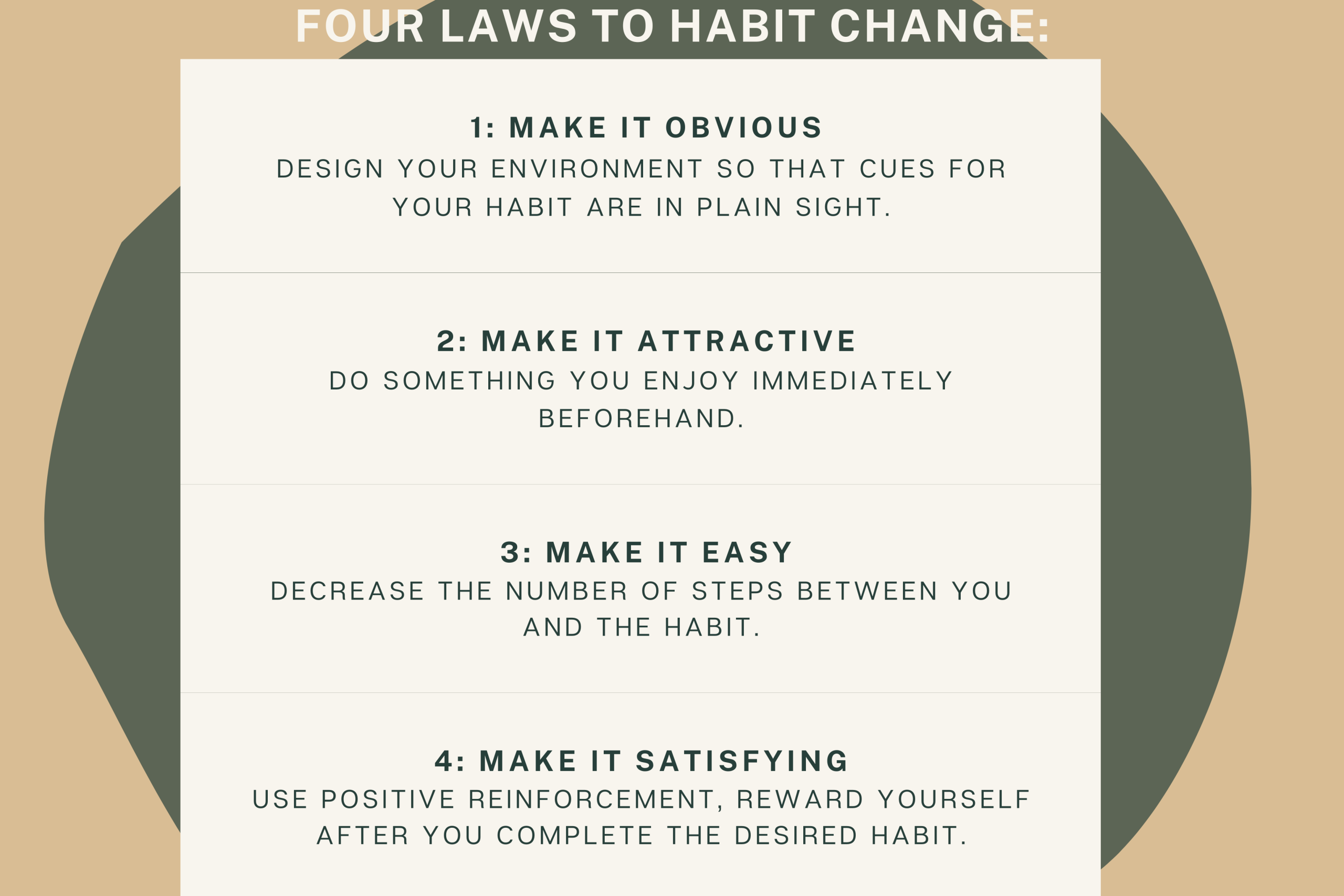New Year, New You?

As another year unfolds…
Perhaps you’ve got BIG plans this year. Maybe an overhaul of your ‘worst’ behaviors? This year you’ll finally (insert anything here). Perhaps a new diet, a new workout or gym membership, or improved sleep routines. OR maybe it’s removing an undesirable habit- like alcohol or cigarettes. But why is it that new year resolutions are so hard to keep? What are we getting wrong?
It turns out that humans weren’t wired for drastic changes. Change is uncomfortable, and no one wants to be uncomfortable. So how do we introduce change that will last? We need to set smaller goals. Or as it turns out, smaller habits. Our success lies in these tiny incremental changes- that will ultimately lead to bigger (and lasting) results. We merely need to dip our toes in the pool of transformation.
First, let’s visit how change come to light. With this in mind, is The Transtheoretical Model of Behavior Change. Or more simply The Stages of Change Model. This theory, developed by different fields of psychology, exposes the internal process that leads to change. It includes 5-6 steps, depending if it lasts.

With this model in mind, it’s easy to see why smaller more subtle goals or habit change are easier to achieve and sustain. Our habits form in the first place because we get some sort of benefit out of them. Often the motivation that drives them are subconscious. So it’s important to institute awareness, and get to the bottom of what drives our behavior.
In 2012 Charles Duhiggs book The Power of Habit, he isolated the root of habits (good or bad) into a 3-step loop in our brain:
1. The Cue
-
Often subconscious, this is something that reminds us to initiate a habit. This could be a time of day, or a feeling-state like hunger or boredom.
Example: Everyday after work, you crack open a beer.
2. The Routine
-
This is the behavior or habit you seek to change.
Example: Excessive snacking, alcohol, or phone use.
3. The Reward
-
What are you getting from repeating this habit? Rewards are powerful because they satisfy cravings.
Example: Are you passing time, satiating boredom, or distracting yourself from countless other responsibilities? (Honestly, same.)
In Duhigg's framework, in order to successfully rework our habits, we must engage these Four Steps:

More recently, we have James Clear's book; Atomic Habits. He built upon Duhigg's work and established his own area of expertise including his Four Laws to Habit Change. These laws make the slippery slope of making a habit stick foolproof.

In the end, the more specific and bite-size a behavior change is, the more likely we are to adopt it into our existing routines. Bringing our attention to a habit we want to adopt or stop- is a great place to start. We can take microsteps towards action, while treating ourselves with kindness and forgiveness along the way. Rather than aiming for a new and improved self, look to update bits and pieces. Improving one habit can have a snowball effect, leading to better habits down the road. As we go, we gain confidence in ourselves and our ability to institute and uphold change.

Sign up for our newsletter!
Join to get the Haskill Newsletter and be the first to learn about new products, events, and other goings-on at Haskill Creek!









